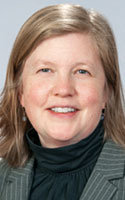Seasonal affective disorder affects people every year during winter
By Ernst Lamothe Jr.

Seasonal change can be a nice change of scenery for a split second, but the long-term effects are not always pleasing to everyone.
Seasonal affective disorder (SAD), which typically occurs during the winter, is a mood disorder characterized by depression. Mostly caused when there is less sunlight and the weather is colder, it can have a crippling and overwhelming sensation in the lives of affected people.
“People are more apt to be diagnosed with SAD when they live farther north and farther away from the equator where there are notable symptoms of this depression disorder,” said Sarah Hopkins, licensed clinical social worker at Rochester Regional Health in Rochester.
Hopkins discussed five facts that people should know about the condition.
1. Seasonal Change
Effects of SAD are directly related to the weather and usually happen during the winter — when weather becomes colder and cloudy and days are shorter. For example, 1% of those who live in Florida and 9% of those who live in New England or Alaska suffer from SAD, according to the National Institute of Mental Health.
“People who are affected by seasonal affective disorder tend to experience symptoms during the winter time,” said Hopkins. “It becomes very difficult for them to accept the weather drop and when daylight savings hit.”
2. People who are affected
About half a million people in the United States suffer from winter SAD, while 10% to 20% may suffer from a milder form of winter blues, according to the Cleveland Clinic. Three-quarters of the sufferers are women, and the depression usually starts in early adulthood. SAD also can occur in children and adolescents. Older adults are less likely to experience SAD.
“Typically I see an increase of SAD in women, and they become more susceptible to it,” said Hopkins.
Medical experts and psychologists say less exposure to sunlight alters the internal biological clock that regulates mood, sleep and hormones. Exposure to light may reset the biological clock.
3. Symptoms
Some of the symptoms include having low energy, hypersomnia, overeating, weight gain, craving carbohydrates and social withdrawal.
“Just like any form of depression, symptoms that occur with people who suffer from SAD can range from mood swings, loss of appetite to overeating, having no interest in doing anything, and sleeping more,” said Hopkins. “In every way, it feels like major depressive disorder.” Functioning in the body becomes disrupted when people are affected by SAD, and these symptoms can last a long time and can become very serious if they do not seek help.
Another theory is that brain chemicals such as serotonin that transmit information between nerves may be changed in people with SAD. It is believed that exposure to light can correct these imbalances.
4. Coping strategies
People who seek help for SAD typically receive counseling as they normally would with a depressive disorder.
“Some ways to ease the symptoms of SAD is to begin by talking to your doctor,” siad Hopkins. “Before I counsel my patients, it is important to ask if they are taking medication. Usually taking medication and counseling is very effective for patients and studies have shown that it is very helpful.”
Not only can counseling help, but the patient has to be willing to want the change.
“Seeking help and talking to someone is the first step to coping and understanding that change can be made,” said Hopkins. “Exercise is also important to help boost immunity and finding yourself to get back to doing what you used to do.”
In addition, light therapy is a way to treat seasonal affective disorder and certain other conditions by exposure to artificial light. During light therapy, a person sits or works near a device called a light therapy box. The box gives off bright light that mimics natural outdoor light. Light therapy is thought to affect brain chemicals linked to mood and sleep, easing SAD symptoms. Using a light therapy box may also help with other types of depression, sleep disorders and other conditions.
5. Seasonal Affect Disorder is not new
When people hear of SAD, many believe that it is something new that hasn’t affected many people. That is far from the case.
“SAD has been affecting people for more than 20-30 years, but the issue is that it was never being recognized as a depressive disorder,” said Hopkins. “I have been working with mental health for over 25 years and it is important that people recognize that SAD is a massive depressive disorder and that it is very important to seek help.”
